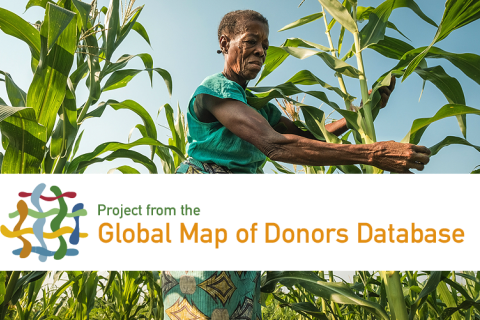Location
The Food and Agriculture Organization of the United Nations leads international efforts to defeat hunger. Serving both developed and developing countries, FAO acts as a neutral forum where all nations meet as equals to negotiate agreements and debate policy. FAO is also a source of knowledge and information. We help developing countries and countries in transition modernize and improve agriculture, forestry and fisheries practices and ensure good nutrition for all. Since our founding in 1945, we have focused special attention on developing rural areas, home to 70 percent of the world's poor and hungry people.
Members:
Resources
Displaying 161 - 165 of 167Piloting the Sierra Leone Community Based Forestry Concept
General
The TCP is facilitating the implementation of the CBF Concept at a pilot scale, drawing lessons and using it to leverage funding for future scale-up. Implementation of the CBF Concept in Sierra Leone will lead to improved security of tenure, clear incentive mechanisms, improved food security and strong community institutions which will go a long way in securing and increasing the forest resources and hence enhancing the environmental services they provide. While FAO is taking the lead in providing technical guidance and advice, the implementation of the project is the responsibility of forestry department staff at national and decentralized levels.
Increase the use of the Voluntary Guidelines on the Responsible Governance of Tenure of Land, Fisheries and Fo
General
Summary: This project under the overall umbrella of the VGGT will serve to develop the capacity of stakeholders to implement improvements to tenure arrangements and thereby promote food security and sustainable development. The project is implemented in 19 countries, namely Malawi, Niger, Senegal, South Africa, Liberia, Sierra Leone, Mauritania, Mali, Uganda, Guinea, Cote d'Ivoire; Myanmar, Nepal, Mongolia, Philippines, Indonesia; Kyrgyzstan; Guatemala, Colombia. Improving transparent, equitable, secure access to and control over land, fisheries and forests and protecting the legitimate tenure rights, whether formal or informal, of millions of poor and insecure people, is a critical part of improving food security. The project contributes to this objective through fostering increased understanding on the VGGT use among CSOs and grass roots organizations to boost their contribution to the multi-stakeholder platforms and other tenure-related ongoing processes at country level and strengthening the partnerships for the wider application and implementation of the VGGT at all levels. The project has produced a capacity development manual for CSOs "Putting the Voluntary Guidelines on Tenure into Practice: A Learning Guide for Civil Society Organizations" written in partnership with FIAN International as coordinating the Land and Territory Working Group of the International Planning Commiteee for Food Sovereignty (IPC).
Mainstreaming sustainable land manangement
General
Support the development of a harmonized national land policy and legislative framework and strengthened capacity of the Guyana Lands and Surveys Commission (GLSC), and partner Ministries and agencies through: the design and development of an integrated and robust spatial data infrastructure and open-data geospatial information system to support improved land administration, enhanced governance of tenure, as well as improved technical support services and mechanisms to encourage adoption of sustainable and climate-smart land use systems and management practices including application and enforcement of regulations, incentive measures, knowledge sharing as well as assessment and monitoring in line with the SDGs.
Technical assistance for the implementation of the agrarian policy in the framework of the VGGT
General
The project aims at supporting the implementation of the agrarian policy (2014) in the frame of the VGGT in particular regarding land access; alternative conflict resolution mechanisms and supporting the monitoring of the policy implementation.


